3.4.6: Play of Colors
- Page ID
- 19168
We discussed play of colors earlier in this chapter (for example the pearly luster that is sometimes exhibited by micas or talc) but it is worth returning to the topic to consider some special examples. When it enters some crystals, white light can be separated into individual wavelengths of varying intensities that are emitted in different directions. The effect is somewhat like the rainbows created when light is scattered by a glass prism. The play of colors in minerals is a form of light scattering due to very fine particles in the minerals or to textures of mineral surfaces. The two photos on the right below (Figures 3.52 and 3.54) show examples of opalescence (most notably exhibited by opals, but also by a variety of K-feldspar called moonstone).
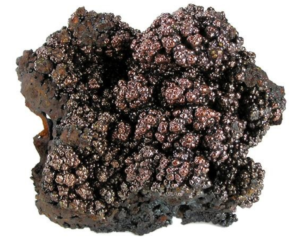
|

|
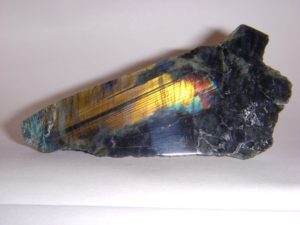
|
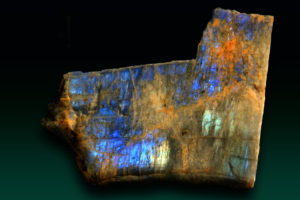
|
The limonite photo above (Figure 3.51) displays iridescence, sometimes described as being similar to the colors on top of an oil slick. This play of colors commonly appears when metallic minerals such as bornite tarnish or, in this case, when limonite tarnishes. The fourth photo (bottom left, Figure 3.53) shows labradorite, a feldspar, displaying labradorescence. Labradorescence is a variety of iridescence.
Chatoyancy and asterism are two special scattering effects most easily seen in gemmy polished minerals, such as the two cabochons (gems that have been shaped and polished instead of faceted) and the polished tiger’s eye stone seen in the photos below.
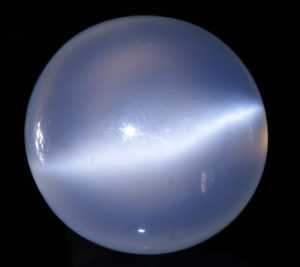
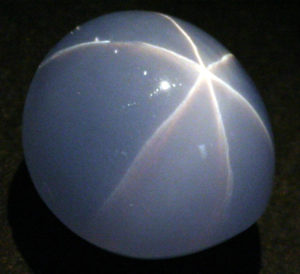
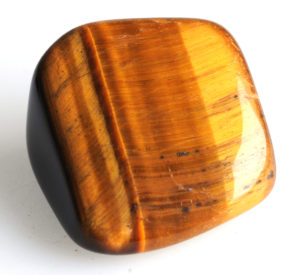
Chatoyant minerals show a bright band of scattered light, often perpendicular to the long direction of a crystal. Such minerals are sometimes said to have a cat’s-eye (like the moonstone above) or tiger’s-eye (like the quartz above) appearance. The satin spar variety of gypsum is also chatoyant.
Asterism, a property sometimes visible in rubies, sapphires, garnets, and some other gems, refers to scattered light appearing as a “star.” The example shown above in(Figure 3.56 is a famous sapphire called the Star of India that is in the American Museum of Natural History in New York. It has spectacular asterism. Chatoyancy and asterism are caused by closely packed parallel fibers or inclusions of other minerals within a mineral crystal.
For some additional pretty examples of chatoyancy and asterism, see the video at:


